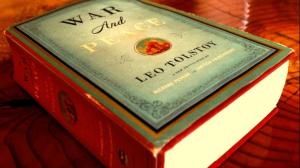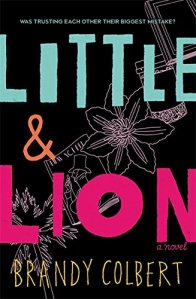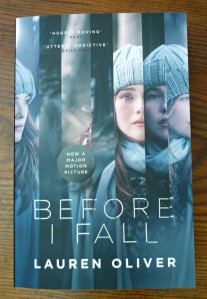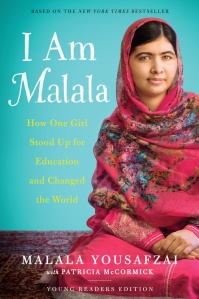
I had to start my final blog post with this J.K. Rowling quote because first of all, c’mon, it’s hecking J.K. Rowling. Secondly, I DO believe there is something magical about a good book. And one of those magic books is Book Love. Penny Kittle does it again in the final two engaging, inspiring, and enlightening chapters of Book Love: Developing Depth, Stamina, and Passion in Adolescent Readers.
I’m going to be honest here- while I read everything assigned for collegiate courses or professional development, I often struggle to connect to the assigned texts. I find most textbooks too stuffy, too patronizing, or just too boring. Kittle’s Book Love is none of those things, and I’m surprised to admit that I was actually a little sad to finish this book! Kittle’s book has given me so many ideas to incorporate into my own classroom, and I know this text will be one I reread and reference for years to come. I’ve also been making little notes of the educational books that Kittle recommends, and I’m planning to add some of those to my summer reading list as well.
The biggest thing that jumped out to me about chapters 8 and 9 in Book Love were the emphasis on creating a reading community. As someone who is passionate about engaging kids with literature, but lacking ideas of how to get started, these two chapters were like manna from heaven. I want my students to be excited by literature, not burdened with activity while reading; I’m constantly looking for tangible ways to see how my students are reading, without making reading feel like “busy work.”
One of the ideas I liked best was how Kittle structured her students’ quarterly reading reflections. She broke it down in five steps on how she coaches her students into greater reading competency by encouraging her students to challenge themselves as readers, to set their own goals, and to commit to achieving those goals. Here are Kittle’s five steps, along with a commentary on how I can apply them to my own classroom reading community:
- Determine Difficulty– One thing I’ve struggled with in both my Independent Reading class and during my independent reading time in English 11, is how to determine the difficulty of what my students are reading. I’ll have one student reading The Silmarillion by J.R.R. Tolkien (an obviously challenging read) and another who has just switched from reading strictly YA romance novels to reading Sue Grafton’s Kinsey Malone “alphabet series.” It’s hard for me to objectively determine what is or is not difficult for a young reader, and how to determine when it is time for them to try a more challenging text. Kittle offers an interesting solution to this conundrum- let the students explain to you what makes their book difficult or not difficult. Kittle demonstrates an engaging activity where students are given a pile of books on their desk and told to order them from least to most difficult using whatever criteria makes sense to them. Students will discuss how interest in the subject, complexity of text (sentence structure, unfamiliar vocabulary, multi-narratives, punctuation), and the number of pages in a book all contribute to the book’s difficulty. Students will then use the same criteria to rank the difficulty of their own reading during the first quarter of the year. I like this activity because it forces kids to puzzle over questions, such as: What have you read that has challenged you as a reader this quarter? Why was it challenging? How have you improved this quarter? What will you reach next?
- Determine Reading Rate– The next step is to determine students’ reading rate. I thought that creative Kittle would have a more complex way of determining the reading rate of students, so I was a bit surprised her technique is so straight forward. Students calculate the pages they read each week for the quarter based on the total number of pages they’ve read in nine weeks. Seems pretty easy to integrate into my classroom to me! I might cut that time frame down a little bit (maybe to four weeks) just so students are able to set reading goals sooner in the year. My Independent Reading course is only a semester long, so waiting nine weeks to set their reading goal would mean they were already halfway through the course.
- Write Mini-reviews of Favorite Books– The next step is to have students summarize books that they love. This practices the essential skill of summarization, but also would prep them for being able to give book talks to the class or to me. At this point, I don’t ask students for summaries of every novel they read; I ask them to choose two and they complete a creative literary analysis report over those two selected novels. However, after reading these chapters, I think limiting my students to just two books is doing them a disservice. So many of my students are so excited to talk about what they are reading because they are genuinely loving it! I need to have students practice this essential writing skill.
- Set Goals– The investment in setting personal goals, working towards goals, and monitoring the progress of achieving those goals is critical in our students’ academic lives. Just like I’ve struggled with determining students’ reading difficulty levels in their choice novels, I’ve also struggled with the concept of a reading goal. Should I be counting completed books? Page numbers? Novel complexities? If I only count page numbers, that means reading one rather large-printed page of The Maze Runner counts the same as a barely-legible page of Lord of the Flies. If I count completed books only, what happens when a student starts a book and finds out they rather despise it? Are they forced to continue? This year I’ve had all my students in my Independent Reading class working towards the same goal- 1,700 pages by the end of the semester. Here’s what I’m realizing- I have students who could blow 1,700 pages out of the water, but are purposely slowing down with a few weeks left in the semester because they don’t want to work “too hard” if they know they’ll hit their goal eventually. On the other hand, I have students who have tackled what I would deem as “tough” novels (The Silmarillion, The Adventures of Tom Sawyer, A Brave New World), who are hundreds of pages behind on their reading goals. I think my solution will be to combine a mix of Kittle’s suggestions, so that students are setting goals based not only on their individual page goals but also on the complexity of their novels.
- Reflect on Your Reading in a Short Essay– Finally, I will ask students to reflect quarterly over their reading. While I currently conduct bi-weekly journals over WHAT students are reading, I don’t often ask students to write about HOW they are reading. One thing that I admire about teenagers is that while they often over-exaggerate, they often are perfectly honest about their own abilities in school. I think by asking students to reflect quarterly over their reading growth will show students that they truly have a say in their own reading skills. Plus, I would want to look forward to reading comments like one of the students in Kittle’s book:
When it comes to reading, choice is critical. It will get those students who don’t read to start reading and will keep the students who read, reading. In my case, choice has been extremely helpful in getting me to start reading, as well as begin to challenge myself in my reading.
And isn’t that really what this is all about? To quote Kittle again: “Dreams lurk in books. We must never forget that. We have been given the privilege of this life in teaching. Let us have the strength to start where they are and lead them.” Book love, forever and always.

 Independent Reading day of the school year (a sacred day that I’ve done my best to reserve solely for choice, independent reading) I’ll be distributing copies of
Independent Reading day of the school year (a sacred day that I’ve done my best to reserve solely for choice, independent reading) I’ll be distributing copies of  challenge my own students at the end of the year. I also want to begin the incredible “
challenge my own students at the end of the year. I also want to begin the incredible “ book set in or about one of the five BRICS countries” and “A book of genre fiction in translation”) and crosses off Russia on the Tale Away World Reading Challenge. I am already planning that this novel will take me THE ENTIRE SUMMER to read. It’s a daunting 1,200 pages of classic historical fiction- this is not a novel that would cross “A one-sitting book” off of the Read Harder Challenge. However, I want to read this novel for many reasons. First of all, I’ll actually be traveling to Russia in June so I feel like reading War and Peace will be a great way to connect with the literary and historical culture of that complex country. (And, come on, how cool would it be to take a selfie while reading War and Peace on the steps of St. Basil’s Cathedral in Moscow?? That’s some Instagram magic in the making.) Secondly, I’m always encouraging my students to read something that challenges them. While I preach this constantly, I’m not sure that I can recall the last time I was truly mentally exercised by a piece of literature. Finally, I sort of want to cross it off my mental list of “I should probably read that classic some day.” In any case, I’m up for the challenge and I’ll definitely be sharing that goal with my students, hoping to inspire them in their summer reading as well.
book set in or about one of the five BRICS countries” and “A book of genre fiction in translation”) and crosses off Russia on the Tale Away World Reading Challenge. I am already planning that this novel will take me THE ENTIRE SUMMER to read. It’s a daunting 1,200 pages of classic historical fiction- this is not a novel that would cross “A one-sitting book” off of the Read Harder Challenge. However, I want to read this novel for many reasons. First of all, I’ll actually be traveling to Russia in June so I feel like reading War and Peace will be a great way to connect with the literary and historical culture of that complex country. (And, come on, how cool would it be to take a selfie while reading War and Peace on the steps of St. Basil’s Cathedral in Moscow?? That’s some Instagram magic in the making.) Secondly, I’m always encouraging my students to read something that challenges them. While I preach this constantly, I’m not sure that I can recall the last time I was truly mentally exercised by a piece of literature. Finally, I sort of want to cross it off my mental list of “I should probably read that classic some day.” In any case, I’m up for the challenge and I’ll definitely be sharing that goal with my students, hoping to inspire them in their summer reading as well.
 Matched
Matched








 far more than I thought I would! Romance isn’t a genre I’ve dabbled in much in the the past, so this book has pushed me out onto the proverbial limb. While the complexity or symbolism inside the book aren’t really too heavy, I really appreciate Dessen’s straight-forward voice and the relatable characters. The main character, Sydney, uses dialogue that sound like any one of the girls in my classes. There have been a few interpersonal conflicts in the story so far, so I’m curious to see how those will be resolved. Also I believe the flames of love are starting to spark up between a couple characters, which I believe is what is driving the story forward at this point. I don’t really think there is anything super complex or compelling in this story’s plot, so mainly I’m focusing on how Dessen uses young adult dialogue and how she develops teenaged romantic relationships on the page. Clearly she’s doing something right, because I can’t get my girls to put down their Dessen books in my classes!
far more than I thought I would! Romance isn’t a genre I’ve dabbled in much in the the past, so this book has pushed me out onto the proverbial limb. While the complexity or symbolism inside the book aren’t really too heavy, I really appreciate Dessen’s straight-forward voice and the relatable characters. The main character, Sydney, uses dialogue that sound like any one of the girls in my classes. There have been a few interpersonal conflicts in the story so far, so I’m curious to see how those will be resolved. Also I believe the flames of love are starting to spark up between a couple characters, which I believe is what is driving the story forward at this point. I don’t really think there is anything super complex or compelling in this story’s plot, so mainly I’m focusing on how Dessen uses young adult dialogue and how she develops teenaged romantic relationships on the page. Clearly she’s doing something right, because I can’t get my girls to put down their Dessen books in my classes! read this book it NEEDS to be at the top of your list. I never cry while reading books, and this book had me tearing up at the end!!! I absolutely loved the narrative voice of this tale, and the main character, Liesel, is one of the most interesting girls I’ve found in YA literature. She is completely believable, which I think is what made me so empathetic toward her character. I absolutely loved the book, and highly recommend it to anyone looking for an enjoyable historical fiction.
read this book it NEEDS to be at the top of your list. I never cry while reading books, and this book had me tearing up at the end!!! I absolutely loved the narrative voice of this tale, and the main character, Liesel, is one of the most interesting girls I’ve found in YA literature. She is completely believable, which I think is what made me so empathetic toward her character. I absolutely loved the book, and highly recommend it to anyone looking for an enjoyable historical fiction.